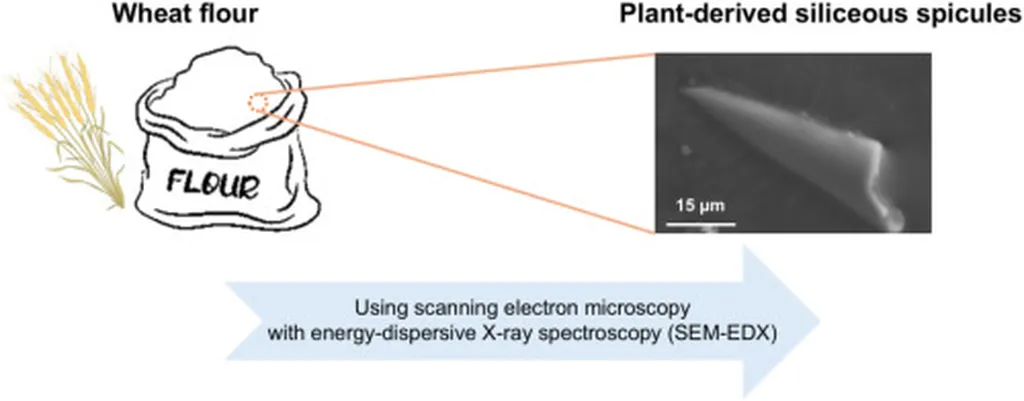In the heart of China’s northern plains, a humble grain of wheat may hold the key to unraveling a complex health puzzle. Researchers, led by Shenxi Deng from the School of Public Health at The University of Hong Kong, have shed light on an overlooked dietary contaminant: plant-derived silica particles, or phytoliths, found in wheat flour. Their findings, published in the *Journal of Agricultural and Food Research* (translated from Chinese), not only challenge our understanding of dietary exposure but also hint at potential implications for health and agriculture.
The study, a first of its kind, systematically detected and quantified sharp, needle-like siliceous spicules in wheat flour from two regions of northern China: Linzhou and Linfen. These regions differ significantly in aridity and incidence of esophageal squamous cell carcinoma (ESCC), a type of cancer that has long baffled researchers due to its geographic disparities.
Using advanced imaging techniques, the team found that flour from Linzhou, an area with high ESCC incidence and aridity, contained nearly twice the spicule burden of Linfen. “This corresponds to an estimated 2.4-fold higher daily intake of these sharp particles,” Deng explains. The implications are profound, as this suggests that dietary exposure to these particles may be environmentally modulated by aridity and could potentially contribute to the observed geographic disparities in ESCC risk.
The research also explored the impact of washing practices on contamination levels. Controlled washing experiments showed a significant reduction in contamination, with up to 75% of the particles removed. However, residual levels persisted, indicating that in regions like Linzhou, where water availability is limited, the contamination burden could be substantially higher due to constrained washing practices.
While the study does not prove causality, it revitalizes the “glass root” hypothesis—a theory that suggests a link between dietary silica particles and ESCC risk—with modern, quantitative data. “This work highlights the need for larger surveys, agronomic studies, and biological assessments to clarify the health implications,” Deng emphasizes.
The findings could have far-reaching implications for the agricultural and food processing industries. Understanding the factors that influence the contamination of wheat flour with silica particles could lead to the development of new processing techniques or breeding programs aimed at reducing the presence of these particles in wheat. This could not only improve food safety but also potentially reduce the risk of ESCC in high-incidence regions.
Moreover, the study underscores the importance of considering environmental factors in agricultural practices. As climate change continues to alter weather patterns, understanding how aridity affects crop contamination could become increasingly important. This research could pave the way for more resilient and adaptable agricultural practices that take into account not just yield but also food safety and public health.
In the broader context, this research serves as a reminder of the intricate interplay between our environment, our food, and our health. It challenges us to look beyond the obvious and consider the subtle, often overlooked factors that may be shaping our well-being. As we continue to grapple with complex health issues, studies like this one offer valuable insights and open new avenues for exploration.
The journey to unravel the mysteries of ESCC and other health disparities is far from over. But with each new discovery, we take a step closer to understanding the intricate web of factors that influence our health. And in the heart of China’s northern plains, a humble grain of wheat may hold the key to unlocking some of these long-standing mysteries.

